FOREST FLASH November 2022
In Pacific Forest Trust’s e-newsletter, Forest Flash, we send you the most recent PFT news and updates on forests, clean water, climate, and wildlife. Subscribe here.
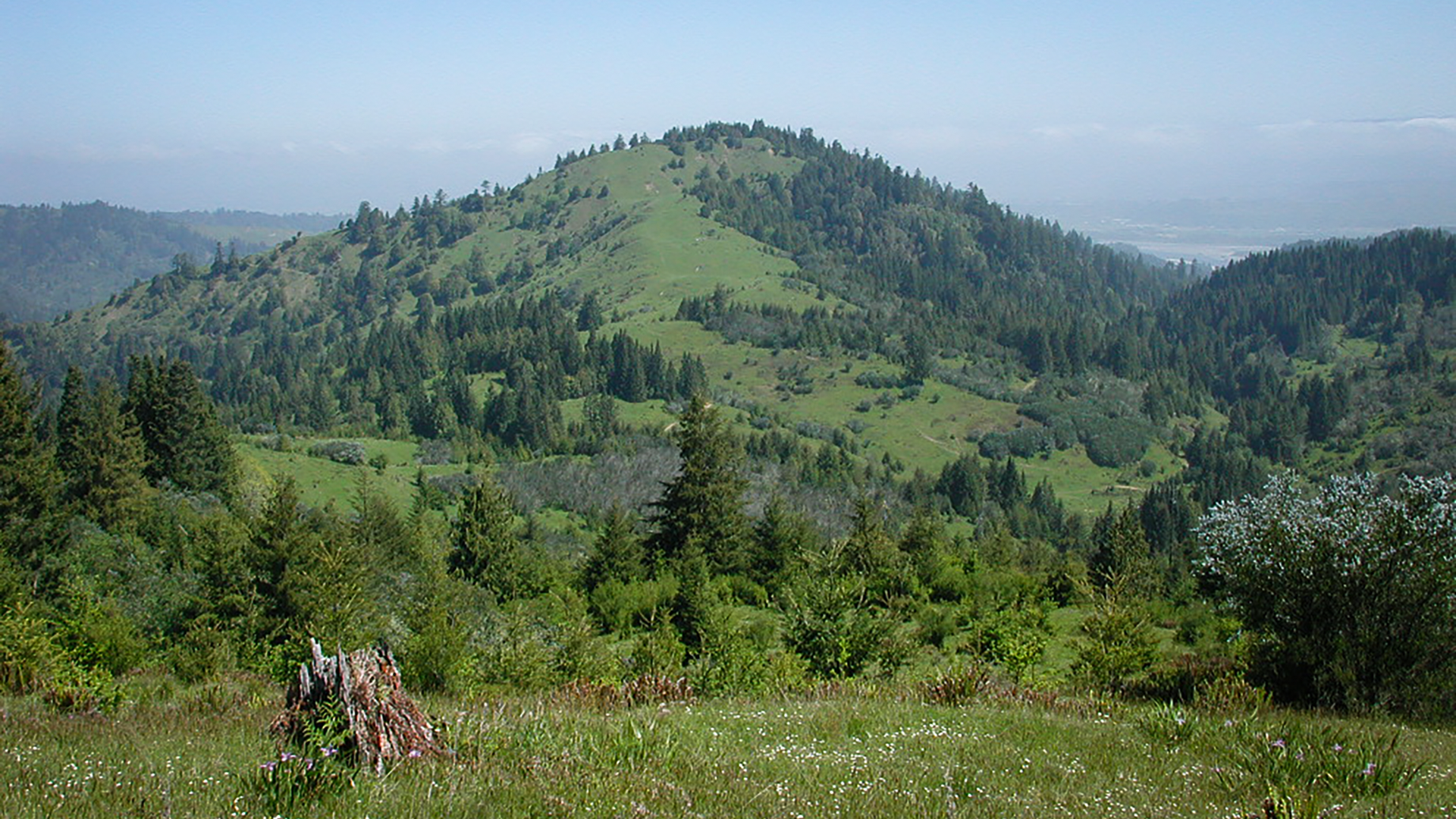
Howe Creek Ranch
Working forest conservation easements are at the core of Pacific Forest Trust’s work. Every acre protected under these powerful, legally binding agreements is another acre of America’s private forests that counts towards climate health, habitat restoration, and responsibly harvested wood – forever. With over 110,000 acres under easement across northern California and Oregon, that means a lot of travel to be onsite on every property every year. This month we caught up with PFT Stewardship Forester Jack Singer to learn more about the important work that happens after an easement is put in place and hear about some of our landowner partners he worked with in 2022.
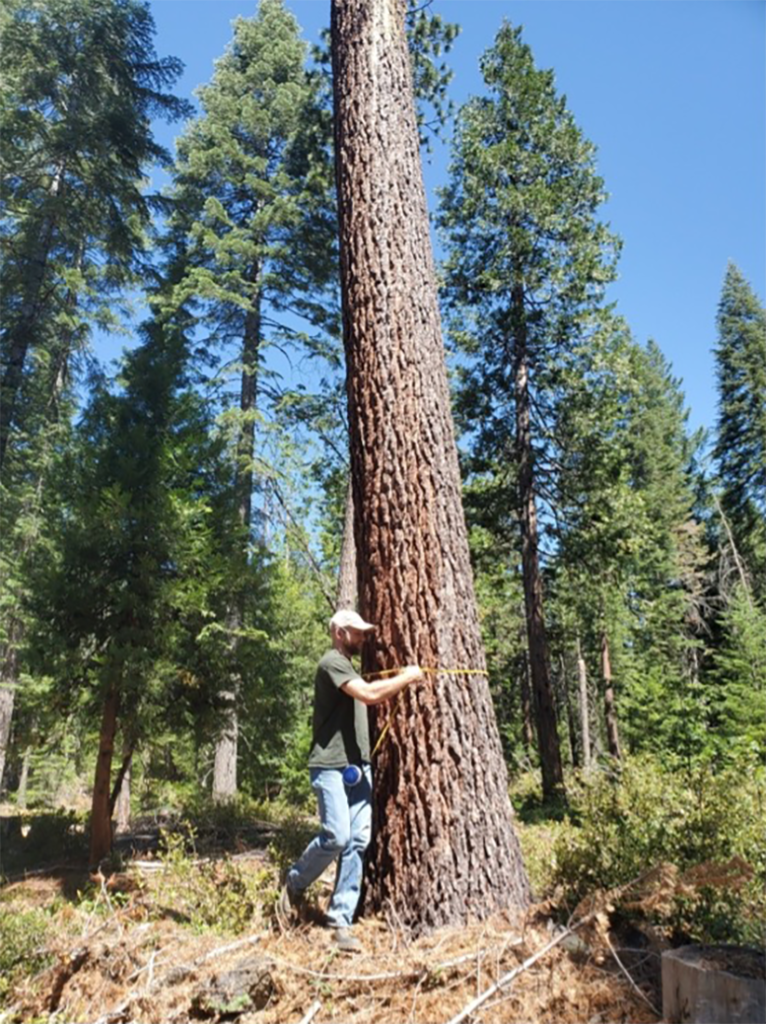
Stewardship Forester Jack Singer in the field.
If PFT had a marketing department, you could think of the Stewardship Team as our Customer Success Reps: they help us maintain fruitful partnerships with landowners, acting as resources and making sure the terms of each unique easement are being met. While they can often be found on outdoor monitoring missions, they also put in time at their desks – making sure each property’s management is following the conservation easement and that Forest Management Plans are current and aligned with the easement, and cataloging data from their field visits, to name just a few of their responsibilities.
This year, Jack worked with the Hackett family, owners of the 2,000-acre Howe Creek Ranch which we conserved in 2002. Situated amid rolling pastures and mighty redwood stands in Ferndale, California, Howe Creek is stewarded by 6th-generation owners from the Hackett family. Like many land-owning families in timber country, previous generations of Hacketts clearcut the forest for grazing pasture and to sell timber. The current generation entered into a conservation easement agreement with Pacific Forest Trust to ensure the land was cared for forever and to help restore the natural forest ecosystem. With tributaries feeding into the Eel River and containing some of Humboldt County’s most important streams for Coho and Chinook salmon runs, ensuring salmon habitat as well as forest restoration and responsible grazing are among the key goals of this easement.
Another notable property Jack is helping to steward through a PFT easement is Mountcrest Working Forest. This diverse and ecologically significant 2,065-acre property is stewarded by longtime PFT partner Jud Parsons. Jud and his family partnered with PFT in 2017 to conserve Mountcrest, and again in 2020 to conserve an additional 553 acres on an adjacent property. This year, we finalized an acquisition of the nearby Mt. Ashland Demonstration Forest. Together, these lands provide essential landscape integration between the Cascade Siskiyou National Monument and the Rogue River National Forest. And it all began with one dedicated stewardship partner.
Working forest conservation easements are so valuable because they serve as guiding frameworks for the kind of active conservation seen on the Hackett and Mountcrest properties. Not only do easements protect family legacies and keep forests as forests forever; they also ensure the development of older, more natural forest types. Donate to help us continue this critical work, and check out our other active conservation projects!
Working forest conservation easements are at the core of Pacific Forest Trust’s work. Every acre protected under these powerful, legally binding agreements is another acre of America’s private forests that counts towards climate health, habitat restoration, and responsibly harvested wood – forever. With over 110,000 acres under easement across northern California and Oregon, that means a lot of travel to be onsite on every property every year. This month we caught up with PFT Stewardship Forester Jack Singer to learn more about the important work that happens after an easement is put in place and hear about some of our landowner partners he worked with in 2022.

Stewardship Forester Jack Singer in the field.
If PFT had a marketing department, you could think of the Stewardship Team as our Customer Success Reps: they help us maintain fruitful partnerships with landowners, acting as resources and making sure the terms of each unique easement are being met. While they can often be found on outdoor monitoring missions, they also put in time at their desks – making sure each property’s management is following the conservation easement and that Forest Management Plans are current and aligned with the easement, and cataloging data from their field visits, to name just a few of their responsibilities.
This year, Jack worked with the Hackett family, owners of the 2,000-acre Howe Creek Ranch which we conserved in 2002. Situated amid rolling pastures and mighty redwood stands in Ferndale, California, Howe Creek is stewarded by 6th-generation owners from the Hackett family. Like many land-owning families in timber country, previous generations of Hacketts clearcut the forest for grazing pasture and to sell timber. The current generation entered into a conservation easement agreement with Pacific Forest Trust to ensure the land was cared for forever and to help restore the natural forest ecosystem. With tributaries feeding into the Eel River and containing some of Humboldt County’s most important streams for Coho and Chinook salmon runs, ensuring salmon habitat as well as forest restoration and responsible grazing are among the key goals of this easement.
Another notable property Jack is helping to steward through a PFT easement is Mountcrest Working Forest. This diverse and ecologically significant 2,065-acre property is stewarded by longtime PFT partner Jud Parsons. Jud and his family partnered with PFT in 2017 to conserve Mountcrest, and again in 2020 to conserve an additional 553 acres on an adjacent property. This year, we finalized an acquisition of the nearby Mt. Ashland Demonstration Forest. Together, these lands provide essential landscape integration between the Cascade Siskiyou National Monument and the Rogue River National Forest. And it all began with one dedicated stewardship partner.
Working forest conservation easements are so valuable because they serve as guiding frameworks for the kind of active conservation seen on the Hackett and Mountcrest properties. Not only do easements protect family legacies and keep forests as forests forever; they also ensure the development of older, more natural forest types. Donate to help us continue this critical work, and check out our other active conservation projects!
Working forest conservation easements are at the core of Pacific Forest Trust’s work. Every acre protected under these powerful, legally binding agreements is another acre of America’s private forests that counts towards climate health, habitat restoration, and responsibly harvested wood – forever. With over 110,000 acres under easement across northern California and Oregon, that means a lot of travel to be onsite on every property every year. This month we caught up with PFT Stewardship Forester Jack Singer to learn more about the important work that happens after an easement is put in place and hear about some of our landowner partners he worked with in 2022.

Stewardship Forester Jack Singer in the field.
If PFT had a marketing department, you could think of the Stewardship Team as our Customer Success Reps: they help us maintain fruitful partnerships with landowners, acting as resources and making sure the terms of each unique easement are being met. While they can often be found on outdoor monitoring missions, they also put in time at their desks – making sure each property’s management is following the conservation easement and that Forest Management Plans are current and aligned with the easement, and cataloging data from their field visits, to name just a few of their responsibilities.
This year, Jack worked with the Hackett family, owners of the 2,000-acre Howe Creek Ranch which we conserved in 2002. Situated amid rolling pastures and mighty redwood stands in Ferndale, California, Howe Creek is stewarded by 6th-generation owners from the Hackett family. Like many land-owning families in timber country, previous generations of Hacketts clearcut the forest for grazing pasture and to sell timber. The current generation entered into a conservation easement agreement with Pacific Forest Trust to ensure the land was cared for forever and to help restore the natural forest ecosystem. With tributaries feeding into the Eel River and containing some of Humboldt County’s most important streams for Coho and Chinook salmon runs, ensuring salmon habitat as well as forest restoration and responsible grazing are among the key goals of this easement.
Another notable property Jack is helping to steward through a PFT easement is Mountcrest Working Forest. This diverse and ecologically significant 2,065-acre property is stewarded by longtime PFT partner Jud Parsons. Jud and his family partnered with PFT in 2017 to conserve Mountcrest, and again in 2020 to conserve an additional 553 acres on an adjacent property. This year, we finalized an acquisition of the nearby Mt. Ashland Demonstration Forest. Together, these lands provide essential landscape integration between the Cascade Siskiyou National Monument and the Rogue River National Forest. And it all began with one dedicated stewardship partner.
Working forest conservation easements are so valuable because they serve as guiding frameworks for the kind of active conservation seen on the Hackett and Mountcrest properties. Not only do easements protect family legacies and keep forests as forests forever; they also ensure the development of older, more natural forest types. Donate to help us continue this critical work, and check out our other active conservation projects!
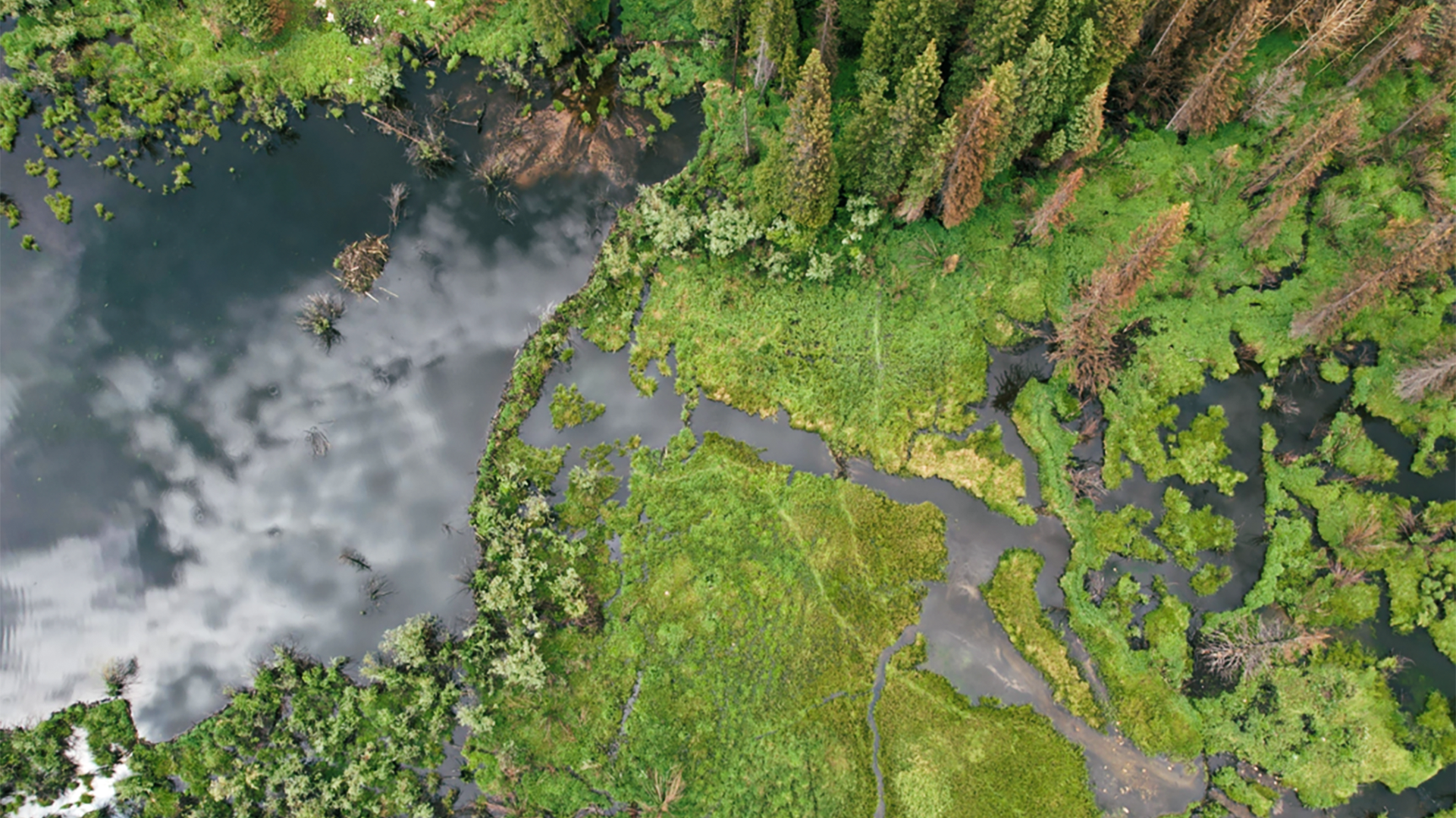
Sierra Valley natural alpine wetland. Credit: Emily Fairfax
This month, PFT’s Klamath-Cascade Advisory Council met to discuss challenges and opportunities in beaver restoration. We were joined by Dr. Emily Fairfax of CSU Channel Islands as well as Valerie Cook, the new head of the Beaver Restoration Program for the California Department of Fish and Wildlife.
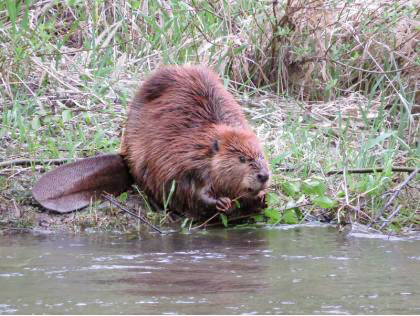 Beavers are enjoying new popularity in California as we learn how essential they are to restoring natural water regimes including streams, watersheds, and groundwater supplies. Beavers can transform struggling streams into rich water-filled worlds. By building their dams, they slow the flow of water, giving it more time to seep into the surrounding land, quenching thirsty plants and preparing a reserve of water-rich soil to help them withstand future drought. The wetter a landscape is, the less vulnerable it is to fire; watersheds containing beavers have been shown to offer three times more protection from active wildfires compared to similar watersheds without beavers!
Beavers are enjoying new popularity in California as we learn how essential they are to restoring natural water regimes including streams, watersheds, and groundwater supplies. Beavers can transform struggling streams into rich water-filled worlds. By building their dams, they slow the flow of water, giving it more time to seep into the surrounding land, quenching thirsty plants and preparing a reserve of water-rich soil to help them withstand future drought. The wetter a landscape is, the less vulnerable it is to fire; watersheds containing beavers have been shown to offer three times more protection from active wildfires compared to similar watersheds without beavers!
Despite these benefits, over 2000 beavers are legally killed in California every year, with permit-seekers citing reasons like road development and grazing requirements. Relocating beavers to new homes is also an option, but it is rarely if ever exercised in California.
It’s not only wildfire management where beavers come in handy. In fact, just having them on land can generate up to $179,000 in value per square mile each year! This value comes in the form of carbon sequestration (forests that don’t burn in a wildfire are forests that store more carbon), habitat and biodiversity preservation, water supply management and purification, and recreation, including hunting and fishing.
Pacific Forest Trust has been working with its many landowners to better understand their thoughts about advancing a more mutually beneficial relationship between beavers and the people who depend on well-functioning forests. The California Department of Fish and Wildlife is staffing up its Beaver Restoration Program with an eye to establishing several pilot relocation projects over the next several years, signaling that the mammals may be looking at a brighter future in the Golden State.
This month, PFT’s Klamath-Cascade Advisory Council met to discuss challenges and opportunities in beaver restoration. We were joined by Dr. Emily Fairfax of CSU Channel Islands as well as Valerie Cook, the new head of the Beaver Restoration Program for the California Department of Fish and Wildlife.
 Beavers are enjoying new popularity in California as we learn how essential they are to restoring natural water regimes including streams, watersheds, and groundwater supplies. Beavers can transform struggling streams into rich water-filled worlds. By building their dams, they slow the flow of water, giving it more time to seep into the surrounding land, quenching thirsty plants and preparing a reserve of water-rich soil to help them withstand future drought. The wetter a landscape is, the less vulnerable it is to fire; watersheds containing beavers have been shown to offer three times more protection from active wildfires compared to similar watersheds without beavers!
Beavers are enjoying new popularity in California as we learn how essential they are to restoring natural water regimes including streams, watersheds, and groundwater supplies. Beavers can transform struggling streams into rich water-filled worlds. By building their dams, they slow the flow of water, giving it more time to seep into the surrounding land, quenching thirsty plants and preparing a reserve of water-rich soil to help them withstand future drought. The wetter a landscape is, the less vulnerable it is to fire; watersheds containing beavers have been shown to offer three times more protection from active wildfires compared to similar watersheds without beavers!
Despite these benefits, over 2000 beavers are legally killed in California every year, with permit-seekers citing reasons like road development and grazing requirements. Relocating beavers to new homes is also an option, but it is rarely if ever exercised in California.
It’s not only wildfire management where beavers come in handy. In fact, just having them on land can generate up to $179,000 in value per square mile each year! This value comes in the form of carbon sequestration (forests that don’t burn in a wildfire are forests that store more carbon), habitat and biodiversity preservation, water supply management and purification, and recreation, including hunting and fishing.
Pacific Forest Trust has been working with its many landowners to better understand their thoughts about advancing a more mutually beneficial relationship between beavers and the people who depend on well-functioning forests. The California Department of Fish and Wildlife is staffing up its Beaver Restoration Program with an eye to establishing several pilot relocation projects over the next several years, signaling that the mammals may be looking at a brighter future in the Golden State.
This month, PFT’s Klamath-Cascade Advisory Council met to discuss challenges and opportunities in beaver restoration. We were joined by Dr. Emily Fairfax of CSU Channel Islands as well as Valerie Cook, the new head of the Beaver Restoration Program for the California Department of Fish and Wildlife.
Beavers are enjoying new popularity in California as we learn how essential they are to restoring natural water regimes including streams, watersheds, and groundwater supplies. Beavers can transform struggling streams into rich water-filled worlds. By building their dams, they slow the flow of water, giving it more time to seep into the surrounding land, quenching thirsty plants and preparing a reserve of water-rich soil to help them withstand future drought. The wetter a landscape is, the less vulnerable it is to fire; watersheds containing beavers have been shown to offer three times more protection from active wildfires compared to similar watersheds without beavers!

Despite these benefits, over 2000 beavers are legally killed in California every year, with permit-seekers citing reasons like road development and grazing requirements. Relocating beavers to new homes is also an option, but it is rarely if ever exercised in California.
It’s not only wildfire management where beavers come in handy. In fact, just having them on land can generate up to $179,000 in value per square mile each year! This value comes in the form of carbon sequestration (forests that don’t burn in a wildfire are forests that store more carbon), habitat and biodiversity preservation, water supply management and purification, and recreation, including hunting and fishing.
Pacific Forest Trust has been working with its many landowners to better understand their thoughts about advancing a more mutually beneficial relationship between beavers and the people who depend on well-functioning forests. The California Department of Fish and Wildlife is staffing up its Beaver Restoration Program with an eye to establishing several pilot relocation projects over the next several years, signaling that the mammals may be looking at a brighter future in the Golden State.
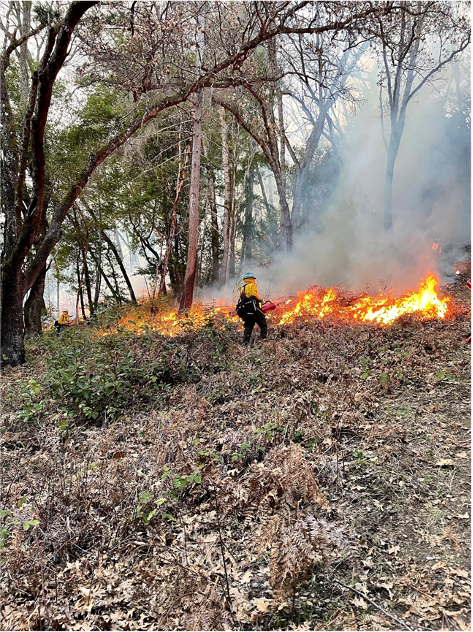 PFT has long been committed to restoring a more natural fire regime management approach. This year, we worked to secure funding in California’s budget for proactive fire management, including the development of new fire training centers. These centers will bring together state and federal agencies, academics, indigenous burners, and others to learn from each other and develop a next-generation workforce to restore the large-scale use of beneficial fire. The budget dedicated $5 million to prescribed fire training around the state.
PFT has long been committed to restoring a more natural fire regime management approach. This year, we worked to secure funding in California’s budget for proactive fire management, including the development of new fire training centers. These centers will bring together state and federal agencies, academics, indigenous burners, and others to learn from each other and develop a next-generation workforce to restore the large-scale use of beneficial fire. The budget dedicated $5 million to prescribed fire training around the state.
California is a fire state
Like the rest of its ecosystems, California’s forests are all fire adapted. For centuries, indigenous people maintained healthy and productive landscapes through a regime of frequent, low-intensity intentional fires that reduced ground fuel buildup and promoted better moisture retention of the soil. In addition to serving the overall health of the land, traditional burning helped maintain wildlife, plants, and other resources that sustained human life and culture.
Land management policies throughout the 1900s put a stop to these beneficial practices. Suppressing cultural burning – as well as natural fires – has had profound effects, contributing to the mammoth fires now plaguing California. Where past fires were small and frequent, those driving through California today are often massive and headline-garnering.
Restoring a beneficial fire regime
California’s new budget allocations are a hopeful sign that the state is beginning to acknowledge the need for prescribed and indigenous burning. Training centers will be critical as agents of change by providing cultural and generational learning as well as practical training. PFT is particularly focused on helping to develop a new facility that will serve as a resource for communities in the Klamath region of Humboldt and Siskiyou. This region already has a strong culture of fire use by Tribes and non-tribal partners. A new training facility will scale up existing training programs and provide critical resources to support wildfire response and recovery.
 PFT has long been committed to restoring a more natural fire regime management approach. This year, we worked to secure funding in California’s budget for proactive fire management, including the development of new fire training centers. These centers will bring together state and federal agencies, academics, indigenous burners, and others to learn from each other and develop a next-generation workforce to restore the large-scale use of beneficial fire. The budget dedicated $5 million to prescribed fire training around the state.
PFT has long been committed to restoring a more natural fire regime management approach. This year, we worked to secure funding in California’s budget for proactive fire management, including the development of new fire training centers. These centers will bring together state and federal agencies, academics, indigenous burners, and others to learn from each other and develop a next-generation workforce to restore the large-scale use of beneficial fire. The budget dedicated $5 million to prescribed fire training around the state.
California is a fire state
Like the rest of its ecosystems, California’s forests are all fire adapted. For centuries, indigenous people maintained healthy and productive landscapes through a regime of frequent, low-intensity intentional fires that reduced ground fuel buildup and promoted better moisture retention of the soil. In addition to serving the overall health of the land, traditional burning helped maintain wildlife, plants, and other resources that sustained human life and culture.
Land management policies throughout the 1900s put a stop to these beneficial practices. Suppressing cultural burning – as well as natural fires – has had profound effects, contributing to the mammoth fires now plaguing California. Where past fires were small and frequent, those driving through California today are often massive and headline-garnering.
Restoring a beneficial fire regime
California’s new budget allocations are a hopeful sign that the state is beginning to acknowledge the need for prescribed and indigenous burning. Training centers will be critical as agents of change by providing cultural and generational learning as well as practical training. PFT is particularly focused on helping to develop a new facility that will serve as a resource for communities in the Klamath region of Humboldt and Siskiyou. This region already has a strong culture of fire use by Tribes and non-tribal partners. A new training facility will scale up existing training programs and provide critical resources to support wildfire response and recovery.
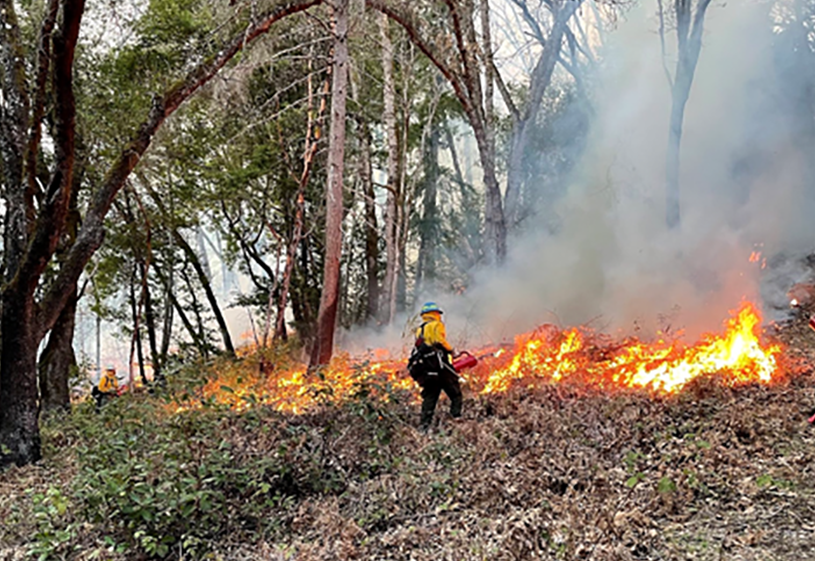
PFT has long been committed to restoring a more natural fire regime management approach. This year, we worked to secure funding in California’s budget for proactive fire management, including the development of new fire training centers. These centers will bring together state and federal agencies, academics, indigenous burners, and others to learn from each other and develop a next-generation workforce to restore the large-scale use of beneficial fire. The budget dedicated $5 million to prescribed fire training around the state.
California is a fire state
Like the rest of its ecosystems, California’s forests are all fire adapted. For centuries, indigenous people maintained healthy and productive landscapes through a regime of frequent, low-intensity intentional fires that reduced ground fuel buildup and promoted better moisture retention of the soil. In addition to serving the overall health of the land, traditional burning helped maintain wildlife, plants, and other resources that sustained human life and culture.
Land management policies throughout the 1900s put a stop to these beneficial practices. Suppressing cultural burning – as well as natural fires – has had profound effects, contributing to the mammoth fires now plaguing California. Where past fires were small and frequent, those driving through California today are often massive and headline-garnering.
Restoring a beneficial fire regime
California’s new budget allocations are a hopeful sign that the state is beginning to acknowledge the need for prescribed and indigenous burning. Training centers will be critical as agents of change by providing cultural and generational learning as well as practical training. PFT is particularly focused on helping to develop a new facility that will serve as a resource for communities in the Klamath region of Humboldt and Siskiyou. This region already has a strong culture of fire use by Tribes and non-tribal partners. A new training facility will scale up existing training programs and provide critical resources to support wildfire response and recovery.
Give with confidence. Charity Navigator awarded Pacific Forest Trust a perfect score in finance and accountability.

